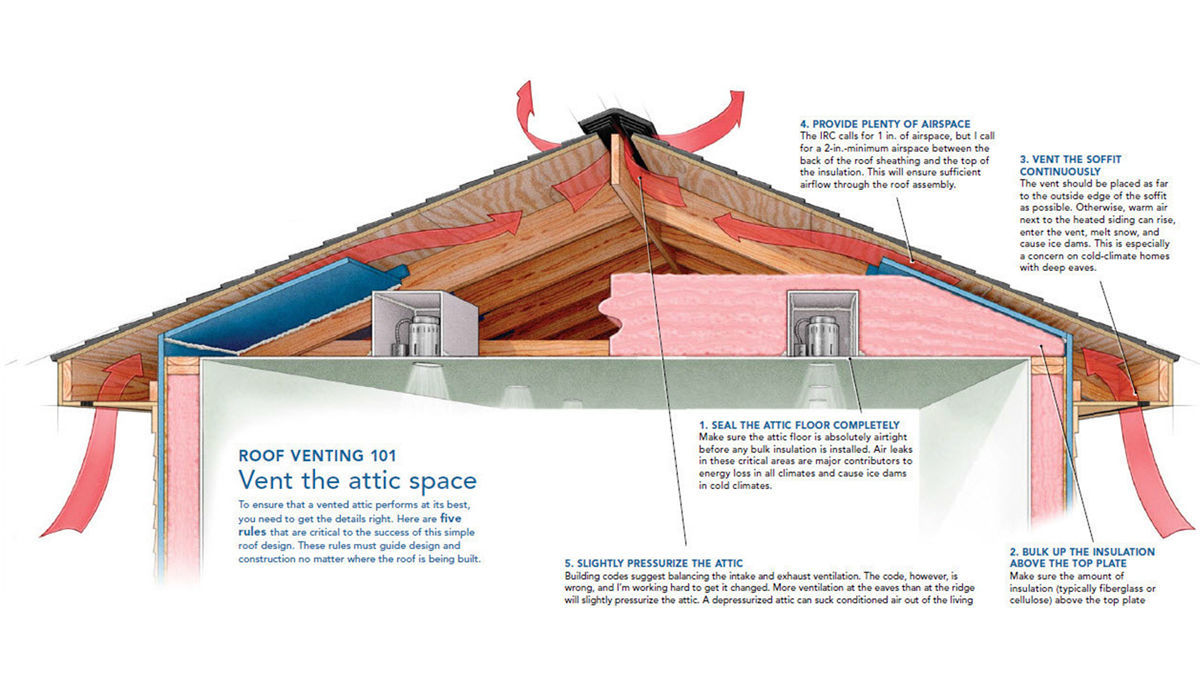If you have battled ice dam formation on your home, you know how frustrating it can be. At a minimum, these cause damage to the roof and, in extreme cases, cause damage to the interior walls. We find that most home owners have tried various solutions prior to contacting Mavriq Construction. These include Manual Removal, Salt and pantyhose, Electric Cables, etc. All of these work to some degree, but none address the root cause: improper ventilation. A lack of insulation can also cause them, but this is rare in our northern environment.
The Science of Ice Dams: Understanding the Problem
So, why do some homes get ice dams and others don’t? Let’s dive into the science behind ice dams and understand why they form.
Ice dams form when heat from the inside of a home escapes into the attic and warms the roof decking during the winter. This heat, combined with heat from the sun, melts the snow on your roof. The water then flows down to the edge of the roof, which is not warmed by your attic and is, therefore colder. Here, the water refreezes, forming an ice dam that prevents the melted snow from draining off the roof. You may not see that ice is also pushing its way under the shingles as the dam grows. This water can then back up and leak into your home, causing damage to walls, ceilings, insulation, and other areas.
“Understanding the causes and effects of ice dams is the first crucial step towards finding a definitive solution.”
It is common to start seeing ice dams after an insulation upgrade. This might seem counterintuitive, but if the insulation is installed without letting cool air from the soffits flow above the insulation, heat gets trapped on the underside of the roof, melting snow. Moore vents installed prior to the insulation upgrade will save you a lot of grief down the road. They are inexpensive and easy to install if addressed before the insulation.
The Solution: Roof Ventilation
The most effective solution to prevent ice dams is proper roof ventilation. A well-vented roof allows for a consistent temperature on the roof surface, reducing the chance of any snow melting and refreezing. It enables your roof to maintain a temperature closer to the outdoor temperature, preventing the cycle that leads to ice dams.
Remember: fixing ice dams is about managing heat loss and maintaining a cold roof temperature.

Energy Efficiency and Cost Savings: The Benefits of Proper Roof Ventilation
Proper ventilation not only helps eliminate ice dams, but can have a large impact on the energy efficiency of the house and your wallet. By allowing air to flow freely, roof vents move warm and moist air out of the attic, which can significantly reduce energy costs.
During the winter, a well-ventilated roof helps maintain a cold attic temperature, which reduces the risk of ice dams. It counters the melting-freezing cycle that forms these ice dams. Warm air from the rooms below meets the cold surface of the roof. If the roof is poorly ventilated, this warm air is trapped, melting the snow on top. When this water refreezes, it results in ice dams, causing potential roof damage and higher heating expenses.
In contrast, during summer, a properly ventilated roof can expel the solar-heated hot air in the attic, reducing the building’s cooling load and reducing summer cooling costs. The cool air can then flow into this space, lowering the temperature in your living areas and reducing the strain on your air conditioning system.
Maintaining your home’s temperature consistency contributes to your financial savings. Over time, these savings can recover the costs of installing roof vents.
Conclusion
Ice Dams are a common problem with a fairly simple solution. Installing Moore Vents is easy to do yourself; just be careful not to crush your insulation, or you will have a whole new set of problems. If you need someone to do this for you, contact us today, and we will give you a free estimate.

